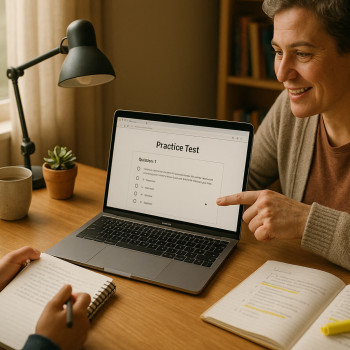Understanding Why SAT Scores Still Matter at Top Private Universities
When you sit down with a stack of college brochures or scroll through selective school profiles, one number keeps popping up: the median or 25th–75th SAT range. For many highly selective private universities, SAT scores remain an important piece of the admissions puzzle. They’re not everything — your GPA, essays, recommendations, extracurriculars, and fit matter too — but scores can help open doors, unlock merit scholarships, and give admissions officers a common metric to compare applicants from diverse backgrounds.

Why the continued emphasis? For selective private schools, applicants often have similarly strong transcripts and leadership records. An SAT score that aligns with a school’s typical admitted-student range can avoid your application being filtered out early and can strengthen your chance when other pieces of the file are close.
Which Private Universities Typically Have the Most Competitive SAT Scores?
While lists change year to year, a pattern is consistent: many Ivy League institutions and a handful of elite private research universities and liberal arts colleges report median SAT scores near the top of the 400–1600 scale. These are schools where admitted students often score in the upper percentiles nationwide.
Instead of naming a static top-ten (which shifts), think in categories: the ultra-selective Ivies and comparable private research universities; elite STEM-focused institutes; and a select group of small liberal arts colleges with unusually high score profiles. The practical takeaway for students: aim high if you’re applying to these groups, but pair ambitious targets with a smart plan.
What SAT Scores Should You Target?
Here’s a straightforward way to set targets:
- Reach or exceed a school’s 75th percentile SAT score to be very competitive.
- Aim for the median (50th percentile) to be safely in the middle of admitted applicants.
- Use a school’s 25th percentile as the minimum if you have other strong distinguishing factors.
Example ranges that students often find helpful:
| Applicant Type | Target SAT Score | Why This Target? |
|---|---|---|
| Reaching for Ivies / Top Private Research | 1500–1600 | Many admitted students cluster toward the top scores; aim for excellence. |
| Highly Selective Private Colleges | 1450–1550 | Competitive ranges; strong scores improve scholarship chances. |
| Selective Liberal Arts Colleges | 1400–1520 | Top programs value balanced SAT performance across sections. |
| Good Fit Private Schools (still competitive) | 1300–1450 | Solid scores, combined with standout essays and activities, often work well. |
How the Digital SAT Changes Preparation (and What Stays the Same)
The Digital SAT introduced a new test-taking experience: shorter adaptive sections, an on-screen calculator in math, and a modern interface. But preparation fundamentals remain true: mastery of content, timing strategy, and practice under realistic conditions. The adaptive format means your performance on the first module influences the second; early accuracy helps place you into a stronger second block. That makes warm, confident starts and careful pacing even more important.
Designing a Practical Study Plan for Top-Tier Targets
Planning is everything. Treat SAT prep like training for a competition — consistent, measurable, and varied. Here’s a sample 16-week plan for students aiming at highly selective private universities:
- Weeks 1–4: Diagnostic test, concept review, and foundational practice (focus on weakest areas).
- Weeks 5–8: Skill-building phase — timed sections, target drills for Math and Evidence-Based Reading & Writing.
- Weeks 9–12: Full digital practice tests on an official platform, timing refinement, and question-typing practice (grid-in, multi-step problems, data analysis).
- Weeks 13–16: Polishing — test-day simulations, stress management, and error log review to eliminate repeated mistakes.
Suggested weekly rhythm:
- 3–4 focused study sessions (60–90 minutes each)
- 1 full practice test every 2 weeks, increasing to weekly in the last month
- Regular review of an error log to avoid repeating mistakes
Tools and Methods That Work for Students (and Parents)
Successful preparation blends quality resources with accountability. Methods that consistently help students reach ambitious targets include:
- Official practice tests in the digital format — nothing substitutes practice on a platform that mirrors the actual test.
- Adaptive practice to mirror the second-module stakes of the Digital SAT.
- One-on-one tutoring for targeted remediation — especially helpful when teachers or parents can’t diagnose subtle error patterns.
- Timed drills and pacing checkpoints so sections are finished with breathing room for review.
- Practice under test-like conditions to build stamina and reduce test-day surprises.
One-on-one tutoring — the personalized guidance that meets a student exactly where they are — is often the multiplier that translates practice into score gains. Sparkl’s personalized tutoring, for example, offers tailored study plans, expert tutors, and AI-driven insights that identify weak spots quickly so students spend time where it matters most. When students combine that kind of focused support with disciplined practice, they often see faster, more reliable improvement.
Section-by-Section Strategy: What Top Applicants Do Differently
Evidence-Based Reading & Writing
Top scorers read actively: annotating passages, predicting answers, and eliminating distractors quickly. Practice with a variety of complex informational and humanities passages builds the background knowledge and stamina needed for the top percentiles. A smart strategy is to target question types that cost you the most time or yield the most mistakes — sentence structure, data interpretation, or vocabulary in context — and drill them deliberately.
Math
On the Digital SAT math section, fluency with algebra, problem-solving, and data analysis is essential. For students aiming at elite private universities, mastery of advanced-algebra concepts, function analysis, and multi-step modeling problems is common. Work backward from full practice problems: if you miss a question, don’t just correct it — dissect why you missed it and create a short tailored drill to eradicate that error type.
Adaptive Mindset for Module Two
Because the Digital SAT’s adaptive nature can change the difficulty of the second module, treat the first module as an investment in your second-module positioning. Early precision in the test helps unlock higher-quality questions later — a potential path to a higher scaled score.
Balancing Test Prep With the Rest of Your Application
Top private universities evaluate whole students. Aiming for a 1500+ SAT is great, but not at the cost of a rushed application essay or neglected extracurricular leadership. Use a calendar: block regular hours for schoolwork, test prep, college essays, and activities. Prudent time management reduces stress and improves overall application quality.
Real-World Examples: How Students Turn Scores Into Offers
Consider these anonymous, composite-style examples drawn from common admissions patterns:
- Case A: Emma raised her SAT from a 1420 to a 1520 over six months by focusing on error-pattern drills and weekly full-length digital practice tests. With strong research experience and a standout personal essay, she gained admission to a top private research university with merit scholarship consideration.
- Case B: Raj targeted a selective liberal arts college. He never broke 1500 on practice tests, but his 1460, excellent teacher recommendations, and a unique leadership project earned him admission and a departmental scholarship—showing that balance matters.
These examples show that high SAT performance helps, but the story you tell across essays, recommendations, and activities completes the picture.
How Parents Can Help Without Adding Pressure
Parents play a critical role by creating structure and emotional support. Here are practical ways to help:
- Provide a quiet, consistent study space and healthy sleep schedules leading into test day.
- Encourage practice tests but avoid over-policing each practice score.
- Help manage logistics: registration deadlines, sending scores, and planning test dates that don’t conflict with major school events.
- Consider professional support when needed — a tutor or program that builds a customized plan can relieve household stress and accelerate progress.
Using Practice Data to Improve Faster
Quantify progress. Keep an error log that notes question type, reason for the error (misread, content gap, careless arithmetic, time pressure), and corrective action. Review that log weekly and convert repeated weaknesses into targeted micro-lessons. Tools that offer AI-driven insights can accelerate this process by identifying patterns across many practice items, recommending specific practice modules, and optimizing sequencing so students get the most learning per hour.
Sample Timeline: Senior Year Roadmap (with Test Dates and Application Milestones)
This roadmap balances test prep and application deadlines so students aiming for private universities with high SAT expectations stay on track:
| Month | Focus | Milestone |
|---|---|---|
| August–September | Diagnostic test, plan, targeted prep | Set study schedule; register for early fall SAT if needed |
| October–November | Full-length practice tests, begin drafts of essays | Take SAT; complete Common App initial sections |
| December–January | Polish essays, retake SAT if needed | Finalize school list and financial aid forms |
| February–March | Submit any remaining applications, interviews | Confirm test score reporting to final schools |
| April–May | Decisions arrive; plan visits | Compare offers and financial aid packages |
How to Interpret Score Ranges Reported by Schools
When a college lists a 25th–75th SAT range, that tells you where the middle 50% of admitted students fall. If your score is at or above the 75th, you’re stronger than most admitted applicants by that metric. If you’re in the middle or below, compensate with exceptional essays, portfolios, or interviews. Use score ranges to prioritize where to apply early action or early decision — hitting the 75th percentile can make your early applications particularly persuasive.
Preparing for Test Day: Practical Checklist
- Run through a full digital practice test on the same device type you’ll use.
- Confirm test day logistics: login credentials, testing location (if in-person), or space setup (if at-school digital testing).
- Get 8–9 hours of sleep the two nights before the test.
- Eat a balanced breakfast; bring water and a light snack for breaks.
- Warm up with a short timed section the morning of — not to stress, but to get into the rhythm.
When to Consider Professional Help
Consider a tutor or a focused program if any of the following are true:
- You plateaued after months of self-study.
- You’ve identified content gaps that need one-on-one instruction to close efficiently.
- You need a tailored strategy for test-taking stamina or anxiety management.
- You’re balancing heavy extracurricular commitments and need a compact, high-impact plan.
Personalized tutoring — like the tailored 1-on-1 guidance Sparkl offers, with study plans matched to a student’s unique error profile and coaches who track progress — can translate hours of study into meaningful score gains, especially when time is tight.
Final Thoughts: Aim High, Prepare Smart, Tell Your Story
Applying to private universities with competitive SAT profiles is a marathon of preparation, self-knowledge, and smart planning. Targeting top SAT ranges demonstrates academic readiness, but the strongest applicants combine scores with authenticity: a clear narrative, evidence of intellectual curiosity, and meaningful contributions outside the classroom. Keep your eyes on both the numbers and the story.
Start with a realistic diagnostic test, create a calendar that balances SAT preparation with application work, and use data to make every study hour count. If you find yourself stuck, know that targeted support — from an experienced tutor or a personalized program — can get you unstuck fast. With disciplined practice, a smart plan, and a clear presentation of who you are, you’ll give your application the best chance to shine at the most competitive private universities.

Ready to Take the Next Step?
Start with a timed diagnostic on an official digital platform, build a weekly schedule that balances practice with rest, and consider personalized support if you want targeted progress. Whether your target is a top private research university or a selective liberal arts college, the right SAT plan — thoughtful, data-driven, and tailored — positions you to do your best when it matters most.
Good luck. Prepare with intention, approach each practice test as progress, and remember: a high SAT score opens doors, but your whole application tells admissions who you are.














No Comments
Leave a comment Cancel